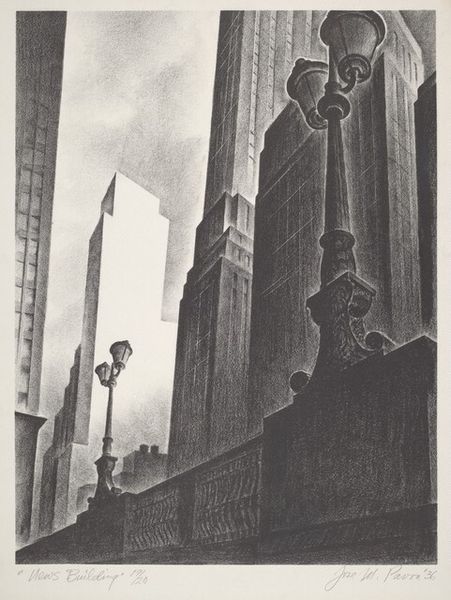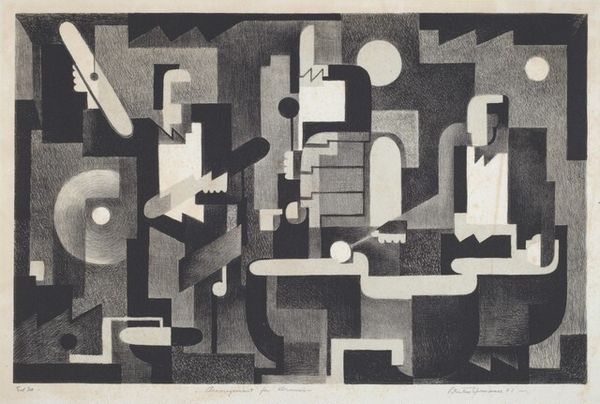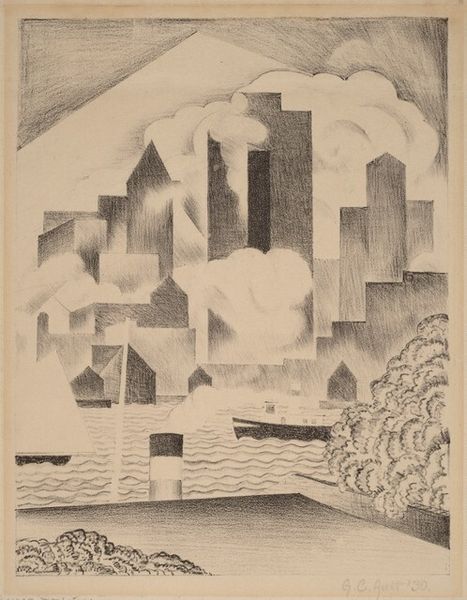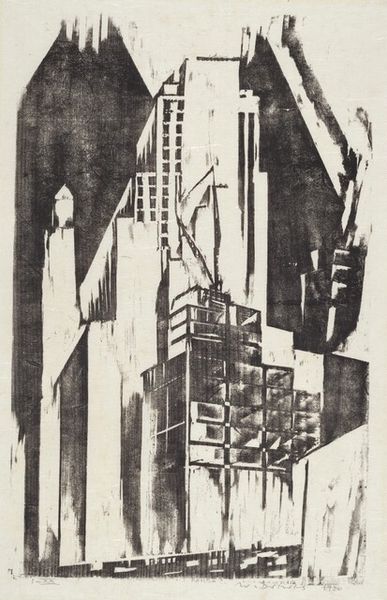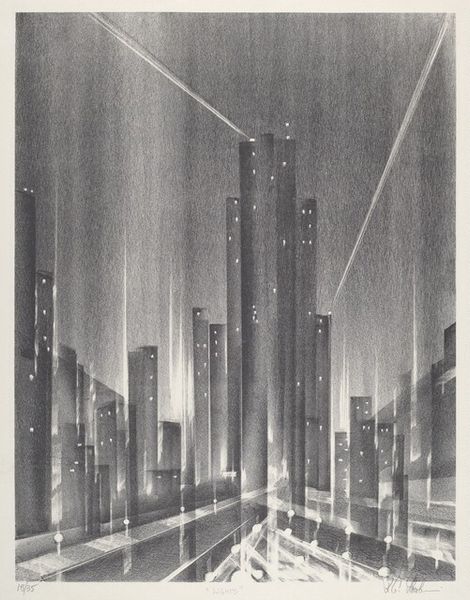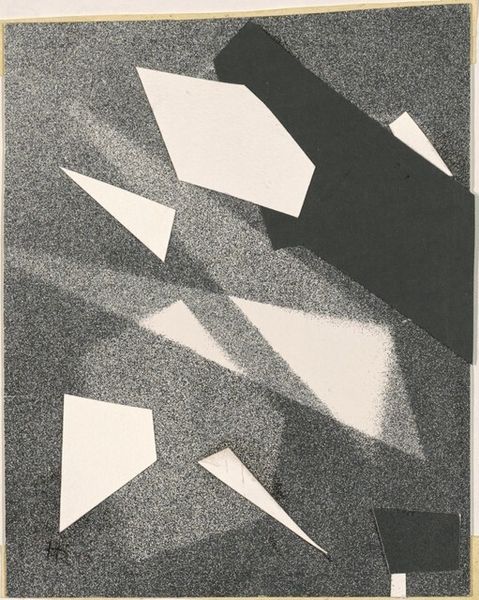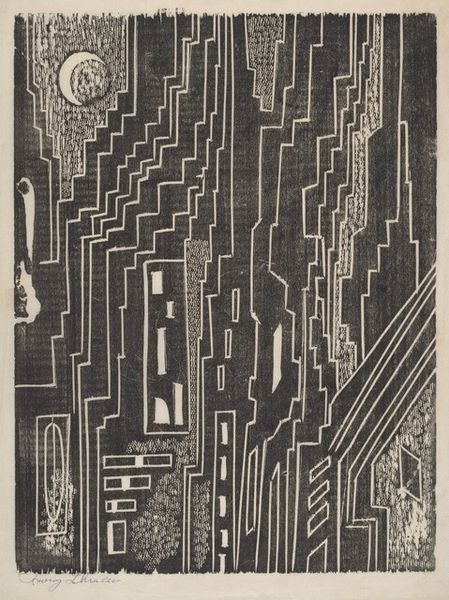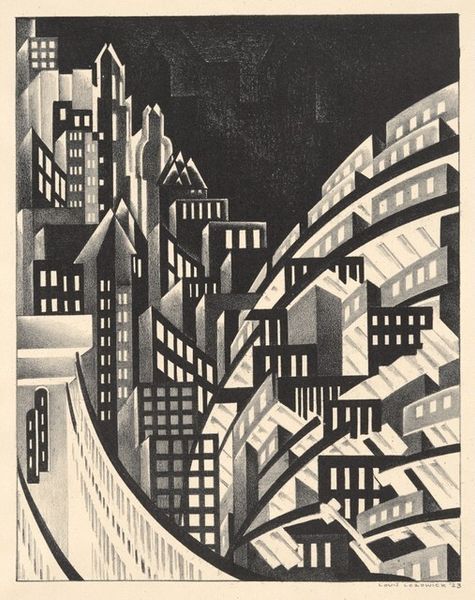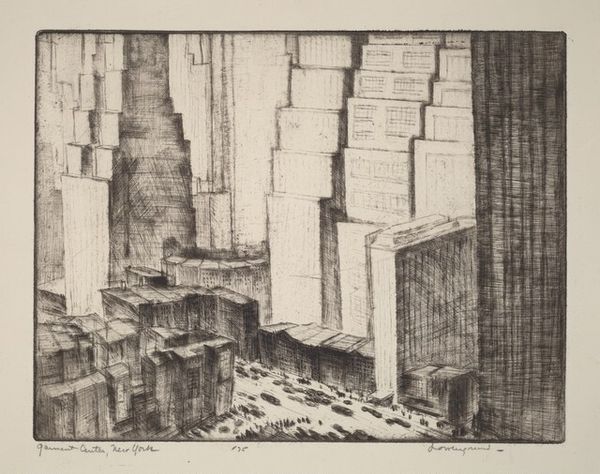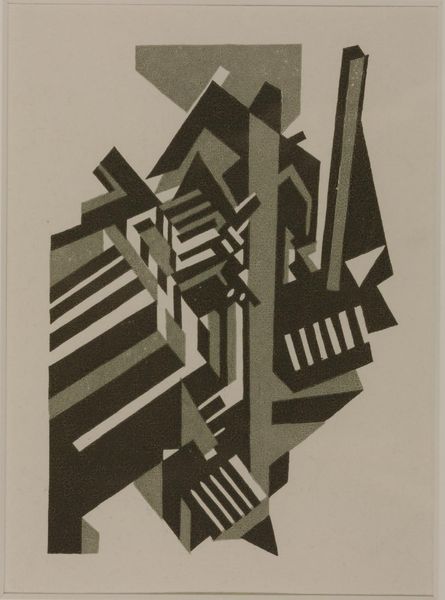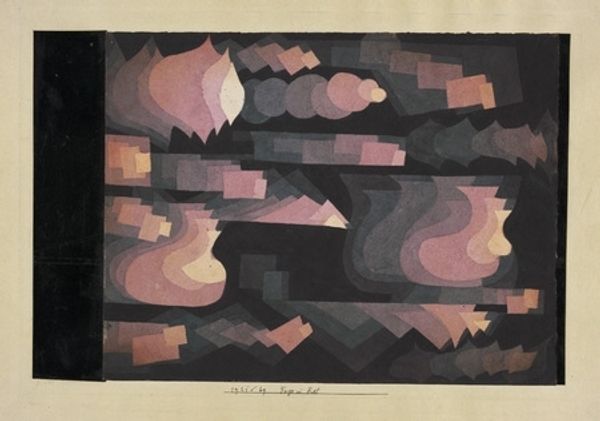
print, graphite
#
pencil drawn
# print
#
charcoal drawing
#
pencil drawing
#
geometric
#
line
#
graphite
#
cityscape
#
graphite
#
modernism
Dimensions: image: 240 x 187 mm sheet: 319 x 252 mm
Copyright: National Gallery of Art: CC0 1.0
Editor: This is Robert Robathan's "City Canyon," a print made using graphite in 1952. It has a really strong graphic quality and a real emphasis on verticality, giving a powerful sense of upward movement, almost like you're looking up from the bottom of a deep chasm. How do you interpret this work through a formal lens? Curator: I appreciate your immediate recognition of the vertical thrust and the 'canyon' metaphor inherent in the composition. Formally, notice how Robathan employs hatching and cross-hatching with graphite to modulate tone and create the illusion of depth and mass. What effect does the stark contrast between the bright central void and the dense, shaded masses on either side have on your perception? Editor: I think it makes the buildings feel even taller and more imposing by comparison; it accentuates the claustrophobia but it feels a little bit theatrical, almost like looking at a stage set. Curator: Precisely. The high contrast, combined with the geometric abstraction of the architectural forms, flattens the perspective, foregrounding surface and pattern over representational depth. Consider how Robathan uses line, not to describe specific details, but to delineate form and create a rhythmic visual experience. Are there any repeating elements or formal devices that stand out to you? Editor: Well, there's the repetition of rectangular shapes that constitute the buildings and smokestacks which gives a sense of order to it all despite the looming oppressive darkness. Curator: Indeed. That is part of how Modernism saw itself: creating visual order. Notice that this sense of depth that we get in the image stems from Robathan's skillful deployment of tonal variations achieved through his application of graphite on paper, a technique of formal rendering and architectural articulation of the surface of the drawing that generates that urban mood, its overall atmospheric tension. What have we learned? Editor: Paying attention to technique opens up the whole discussion! It is how Modern artists translate context into an aesthetic encounter, rather than direct imitation of an urban landscape.
Comments
No comments
Be the first to comment and join the conversation on the ultimate creative platform.
